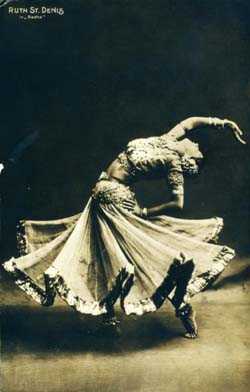Renowned ballerina Suzanne Farrell performed an exceptional 28 years before retiring from an established and widely-accomplished career. Having danced for world-famous companies in Berlin, New York City, Paris and Vienna, Farrell gained an unparalleled wealth of knowledge and expertise that she then chose to pass down to the next generation of dancers as teacher and founder of her own company, the Suzanne Farrell Ballet at the John F. Kennedy Center for the Performing Arts.
The case of Ms. Farrell illustrates the need to preserve knowledge like hers, and the challenges that surround dance documentation: how does one document and preserve motion through space and time? Art museums conserve paintings; libraries house books; but how does one archive a series of fleeting movements? Considerable work on dance documentation has been completed in recent years using notation systems, video, motion capture technologies and oral history. Though, as Doug Reside, Digital Curator of Performing Arts at the New York Public Library notes in his recent blog post, limits of dimension and perspective have forced an urgency for more sophisticated technologies in order to preserve this fluid art form.
Fortunately, a skilled interdisciplinary team from the Maryland Institute for Technology in the Humanities (MITH) and the Kinesiology Department at the University of Maryland, the Advanced Computing Center for the Arts and Design (ACCAD) at Ohio State University, the Kennedy Center, and the New York Public Library for the Performing Arts have teamed dancers, choreographers, software developers, scholars and archivists to establish the Documentation and Preservation of Dance project in order to explore challenges surrounding dance preservation. This project has been generously funded by Ohio State University and by a seed grant from the Office of Vice President for Research and College for Arts and Humanities at the University of Maryland.
Last October the group kicked off a series of workshops devoted to collaborative discussions that established the current state of the art and fleshed out how to document its existence. The first two-day private meeting, held at the New York Public Library for the Performing Arts, brought together choreographers, dancers, scholars and archivists. Topic discussions ranged from notation to oral tradition, motion capture technology to brain imaging techniques. A second two-day private meeting followed at Ohio State’s ACCAD, where technology experts further surveyed issues of dance preservation and documentation.
Next Monday, May 16th, Suzanne Farrell returns to the Kennedy Center for the third and final meeting of the Documentation and Preservation of Dance project. We invite you to join us on Monday, from 7:00 to 10:00 pm; the event is free and open to the public. Accompanying Ms. Farrell, a panel of experts on dance and technology will discuss the outcomes of the previous two workshops and a direction for moving forward. In addition to a reconstruction of a late choreographer’s work, a kinesiology demo will highlight what happens in the brain when the body moves. Ms. Farrell has devoted the later part of her life to passing on knowledge acquired from teacher George Balanchine to future generations. This project seeks to better document the skill of renowned dancers like Ms. Farrell, and advance efforts on the pressing problem of dance preservation.
Admission is free, but reservations are recommended and can be made by calling the Kennedy Center at 202-416-8811.
Image credit: Ruth St. Denis in Radha (ca. 1906). The New York Public Library for the Performing Arts / Jerome Robbins Dance Division.

